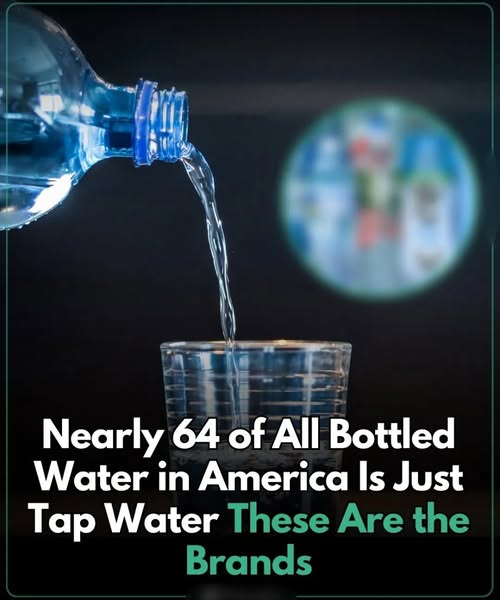In recent decades, bottled water has become a booming industry in the United States, with millions of people buying it daily under the assumption that it is cleaner, safer, and healthier than tap water. However, evidence increasingly suggests that this perception is not always accurate. A recent survey found that approximately 64% of bottled water in the U.S. actually comes from municipal sources—the very same tap water that flows into homes. While some companies treat their water with additional purification steps, others make minimal changes before bottling it and selling it at a significant markup. In some cases, bottled water has even been found to exceed contamination limits, raising serious questions about transparency, value, and consumer trust.
Concerns about quality are real, not hypothetical. Brands such as Walmart’s Sam’s Choice and Giant Food’s Acadia have faced criticism for high contamination levels, sometimes exceeding California’s strict safety standards. For consumers expecting pure water, such findings can feel like a betrayal. That said, not all companies operate without oversight. Brands like Gerber Pure, Nestlé Pure Life, and Penta Ultra-Purified Water have earned recognition for clearly disclosing both their water sources and purification methods. By providing this transparency, they reassure consumers that their water undergoes processes such as reverse osmosis, distillation, or advanced filtration before reaching store shelves.
Despite marketing claims, tap water in the United States is often subject to more rigorous safety standards than bottled water. The Environmental Protection Agency (EPA) enforces strict federal guidelines on municipal water systems, requiring regular testing, public reporting, and corrective action when contaminants are detected. By contrast, bottled water is regulated by the Food and Drug Administration (FDA), which conducts less frequent testing and, in some cases, applies less stringent rules. As a result, the water coming straight from the tap may be held to higher and more consistent safety benchmarks than what is sold in plastic bottles.
Research has also uncovered troubling findings in some bottled water samples. Studies have detected pollutants such as arsenic, bacteria, and even microplastics. These discoveries show that packaging alone does not guarantee purity. In fact, the plastic bottles themselves may contribute to contamination. Microplastic particles, likely originating from the bottle materials or the bottling process, have been found in many popular brands, raising health concerns that scientists are only beginning to understand fully.
Beyond health concerns, bottled water also carries environmental consequences. Producing plastic bottles requires vast amounts of fossil fuels, and billions of discarded bottles end up in landfills or oceans each year. Even when recycled, the process is energy-intensive and often inefficient. Choosing tap water—especially when combined with reusable bottles and home filtration systems—reduces both costs for consumers and the environmental impact of single-use plastics.
For consumers, the key takeaway is that bottled water is not always safer or more valuable than tap water. In many cases, tap water not only meets but exceeds safety expectations while costing a fraction of the price. For those concerned about potential contaminants, installing a home filter provides an extra layer of assurance without the expense or waste of bottled alternatives.
In conclusion, while bottled water remains popular for convenience, its safety and purity are not guaranteed. With municipal water systems under strict EPA oversight and increasing awareness of hidden risks in bottled water, tap water often proves to be the more trustworthy and sustainable choice. By staying informed and making conscious decisions, individuals can protect their health and the environment while avoiding unnecessary costs.
